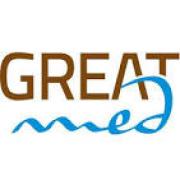Project
Generating a Risk and Ecological Analysis Toolkit for the Mediterranean
Generating a Risk and Ecological Analysis Toolkit for the Mediterranean

Theme (water, food, energy):
|
GREAT Med-”Generating a Risk and Ecological Analysis Toolkit for the Mediterranean”, is a project dealing with crucial issues of biodiversity conservation, management and monitoring on Mediterranean coasts, and focuses in particular on the design and implementation of an integrated strategy based on ecological indicators and risk analysis. It was implemented in five selected study areas (Gulf of Cagliari (Italy), coastal area of Provence (France), the area of Byblos (Lebanon), Coast of Beirut (Lebanon) and the Gulf of Gabès (Tunisia), defining the experimental design and the methodological procedure for applying the same approach, further on, in any coastal Mediterranean area.
The project created a collaborative network of institutions, specialized agencies and local administrations for monitoring, over time, coastal areas in the Mediterranean and for integrating local interventions in a macro-scale action plan at basin level. It targeted also the development of a specific toolkit for assessing biodiversity at plant species and community levels and their vulnerability to potential risks (including oil spills, Hazardous and Noxious Substances, urbanization and tourism pressures), wrapping the results in a transferable product to be disseminated, fostering the transfer of knowledge and expertise on conservation and management of coastal areas and contributing to enhance technical and management capacities of governmental and coastal authorities.
For each of the concerned coastal sites, risk maps were developed based on field and data assessment integrating the vulnerability records plotted on the coast natural heritage, along with identified impacts and hazards, The developed efforts in the project elaborated a toolkit providing basic
information about environmental status, human pressures and potential risks, and suggesting prioritization sites for intervention. |
Website: |
